#michael langlois
Explore tagged Tumblr posts
Text
Enoch, an apocryphal text thought to be written sometime between the third century B.C. and the second century A.D., is named for the biblical Noah’s great-grandfather. One reason Langlois didn’t know much about the book was that it didn’t make it into the Hebrew Bible or the New Testament. Another is that the only complete copy to survive from antiquity was written in an ancient Ethiopic language called Ge’ez.
But beginning in the 1950s, more than 100 fragments from 11 different parchment scrolls of the Book of Enoch, written largely in Aramaic, were found among the Dead Sea Scrolls. A few fragments were relatively large—15 to 20 lines of text—but most were much smaller, ranging in size from a piece of toast to a postage stamp. Someone had to transcribe, translate and annotate all this “Enochic” material—and Langlois’ teacher volunteered him. That’s how he became one of just two students in Paris learning Ge’ez.
Langlois quickly grasped the numerous parallels between Enoch and other books of the New Testament; for instance, Enoch mentions a messiah called the “son of man” who will preside over the Final Judgement. Indeed, some scholars believe Enoch was a major influence on early Christianity, and Langlois had every intention to conduct that type of historical research.
He started by transcribing the text from two small Enoch fragments, but age had made parts of it hard to read; some sections were missing entirely. In the past, scholars had tried to reconstruct missing words and identify where in the larger text these pieces belonged. But after working out his own readings, Langlois noticed the fragments seemed to come from parts of the book that were different from those specified by earlier scholars. He also wondered if their proposed readings could even fit on the fragments they purportedly came from. But how could he tell for sure?
To faithfully reconstruct the text of Enoch, he needed digital images of the scrolls—images that were crisper and more detailed than the printed copies inside the books he was relying on. That was how, in 2004, he found himself traipsing around Paris, searching for a specialized microfiche scanner to upload images to his laptop. Having done that (and lacking cash to buy Photoshop), he downloaded an open-source knockoff.
First, he individually outlined, isolated and reproduced each letter on Fragment 1 and Fragment 2, so he could move them around his screen like alphabet refrigerator magnets, to test different configurations and to create an “alphabet library” for systematic analysis of the script. Next, he began to study the handwriting. Which stroke of a given letter was inscribed first? Did the scribe lift his pen, or did he write multiple parts of a letter in a continuous gesture? Was the stroke thick or thin?
Then Langlois started filling in the blanks. Using the letters he’d collected, he tested the reconstructions proposed by scholars over the preceding decades. Yet large holes remained in the text, or words were too big to fit in the available space. The “text” of the Book of Enoch as it was widely known, in other words, was in many cases mistaken.
Take the story of a group of fallen angels who descend to earth to seduce beautiful women. Using his new technique, Langlois discovered that earlier scholars had gotten the names of some of the angels wrong, and so had not realized the names were derived from Canaanite gods worshipped in the second millennium B.C.—a clear example of the way scriptural authors integrated elements of the cultures that surrounded them into their theologies. “I didn’t consider myself a scholar,” Langlois told me. “I was just a student wondering how we could benefit from these technologies.” Eventually, Langlois wrote a 600-page book that applied his technique to the oldest known scroll of Enoch, making more than 100 “improvements,” as he calls them, to prior readings.
His next book, even more ambitious, detailed his analysis of Dead Sea Scrolls fragments containing snippets of text from the biblical Book of Joshua. From these fragments he concluded that there must be a lost version of Joshua, previously unknown to scholars and extant only in a small number of surviving fragments. Since there are thousands of authentic Dead Sea Scrolls, it appears that much still remains to be learned about the origins of early biblical texts. “Even the void is full of information,” Langlois told me.
— How an Unorthodox Scholar Uses Technology to Expose Biblical Forgeries
#chanan tigay#michael langlois#how an unorthodox scholar uses technology to expose biblical forgeries#history#religion#christianity#judaism#canaanite religion#languages#linguistics#translation#palaeography#forgeries#bible#torah#dead sea scrolls#technology#digital technology#canaan#book of enoch#aramaic#ge'ez
6 notes
·
View notes
Text
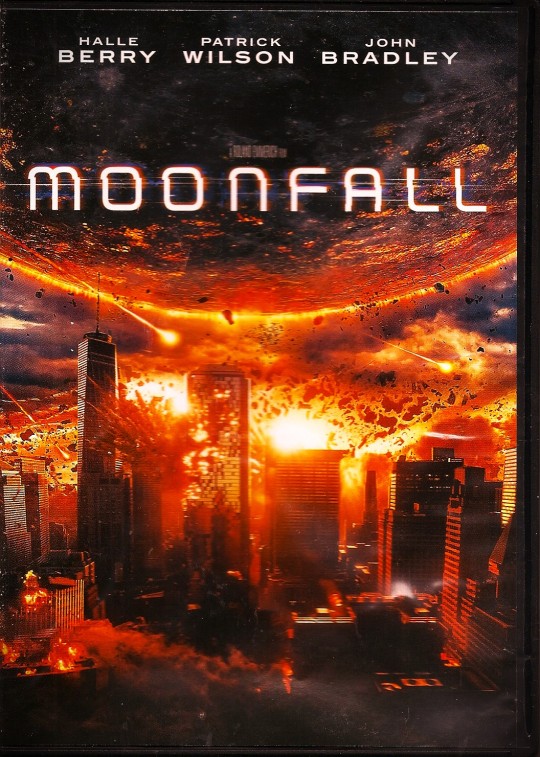
Bad movie I have Moonfall
#Moonfall#Halle Berry#Patrick Wilson#John Bradley#Charlie Plummer#Kelly Yu#Michael Peña#Carolina Bartczak#Zayn Maloney#Ava Weiss#Hazel Nugent#Chris Sandiford#Jonathan Maxwell Silver#Eme Ikwuakor#Stephen Bogaert#Maxim Roy#Ryan Bommarito#Kathleen Fee#Donald Sutherland#Frank Schorpion#Sebastian Pigott#Jaa Smith-Johnson#Adam LeBlanc#Frank Fiola#Katy Breier#Josh Cruddas#Kyle Gatehouse#Tyrone Benskin#Gerardo Lo Dico#Michelle Langlois-Fequet
4 notes
·
View notes
Text
youtube
phobia, john huston 1980
#phobia#john huston#1980#paul michael glaser#susan hogan#john colicos#david bolt#patricia collins#david eisner#lisa langlois#alexandra stewart#robert o'ree#wise blood#subway stories#fight club#die macht der gefühle#flug in gefahr#9/11#about photography
0 notes
Text
On May 19, 1982, Class of 1984 premiered at the Cannes Film Market.




#class of 1984#mark l. lester#roddy mcdowall#perry king#lisa langlois#michael j. fox#dystopian film#action movies#horror movies#grindhouse#drive in movies#movie art#art#drawing#movie history#cannes film market
1 note
·
View note
Text

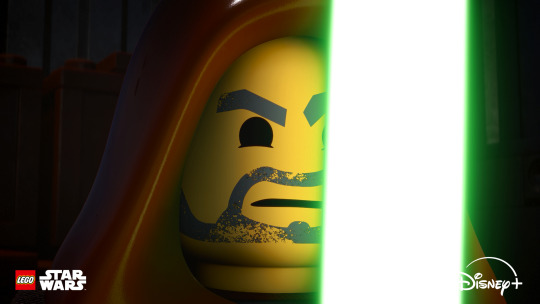


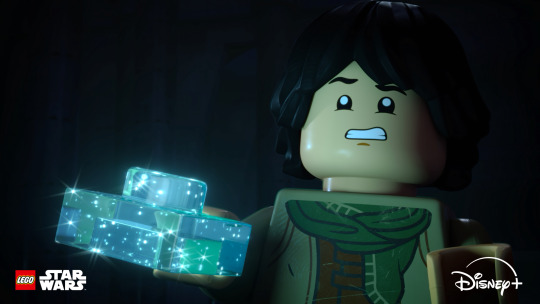



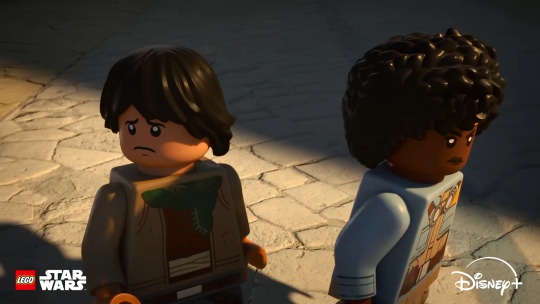
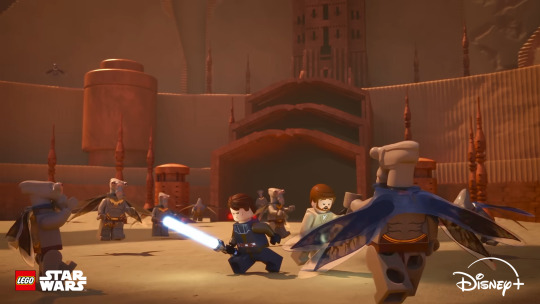
Disney+ Shares Teaser Trailer & Poster for Star Wars: Rebuild The Galaxy” Slated For September
Disney+ unveiled the teaser trailer and poster for the “four-piece” animated special “LEGO Star Wars: Rebuild the Galaxy.”
youtube
In “LEGO Star Wars: Rebuild the Galaxy,” the entire Star Wars Galaxy gets completely mixed up when an ordinary nerf-herder, Sig Greebling (Gaten Matarazzo), unearths a powerful artifact from a hidden Jedi temple. He finds himself thrust into adventure in a new, wondrously wild and twisted version of the galaxy where good guys are bad, bad guys are good, and the fate of all depends on Sig becoming the hero who can put all the pieces back together.
The cast of Star Wars Rebuild The Galaxy includes Gaten Matarazzo ("Stranger Things") as Sig Greebling, Tony Revolori (Studio Ghibli's "The Boy And The Heron") as Dev Greebling, Bobby Moynihan ("DuckTales" franchise) as Jedi Bob, Marsai Martin (Disney Channel "Saturdays") as Yesi Scala, Michael Cusack (Adult Swim "Smiling Friends", "YOLO", 20th Televison Animation Koala Man") as Servo, Ahmed Best ("The Mandalorian") as Darth Jar Jar and Mark Hamill as Luke Skywalker.
Dan Hernandez and Benji Samit (Walt Disney Studios & Point Grey Pictures "Figment") are the executive producers and writters. Chris Buckley directs with Daniel Cavey & Dan Langlois producing with James Waugh, Jacqui Lopez, Josh Rimes, Jill Wilfert, Jason Cosler and Keith Malone as executive producers
The animated special showcases the longtime team-up of Lucasfilm and The LEGO Group. “It’s hard to believe that it’s been twenty-five years since the ground-breaking collaboration between Lucasfilm and The LEGO Group began,” says executive producer James Waugh. “In that time, LEGO Star Wars has given our fans the unique power to unlock their imaginations and play with the galaxy’s elements in any way they can conceive… and build. It’s with that playful spirit in mind that we set out to 'Rebuild the Galaxy' like never before.
#LEGO Star Wars: Rebuild the Galaxy#LEGO Star Wars Rebuild the Galaxy.#LEGO Star Wars#Star Wars#Dan Hernandez#Benji Samit#Lucasfilm#Lucasfilm Ltd.#Lucasfilm Ltd#Lucasfilm Animation#Disney+ Original Specials#Disney Plus Original Specials#Disney+ Original Animated Specials#Disney Plus Original Animated Specials#Youtube
16 notes
·
View notes
Text
Just realized I forgot to post last week's results from France. Lee into the Final.
Short Program
Seung-gil Lee - KOR - 102.42
Emil Nekola - CZE - 98.01
Paul Kuan Yim Han - FRA - 95.58
Kirill Anishin - USA - 94.58
Michael Anderson - USA - 92.68
Andrin Caspari - SUI - 86.94
Hakaru Suzuki - JPN - 79.30
Dean Langlois - FRA - 76.99
Justin Hwang - CAN - 76.94
Daichi Hideo Okamoto - JPN - 76.27
Alerion Le Cleric - FRA - 71.20
Dante Sebastiani - ITA - 70.92
Free Program
Seung-gil Lee - KOR - 205.82
Paul Kuan Yim Han - FRA - 195.21
Kirill Anishin - USA - 194.60
Emil Nekola - CZE - 193.59
Michael Anderson - USA - 190.58
Andrin Caspari - SUI - 176.49
Dean Langlois - FRA - 153.75
Alerion Le Cleric - FRA - 147.84
Justin Hwang - CAN - 144.60
Dante Sebasitani - ITA - 143.71
Hakaru Suzuki - JPN - 137.38
Daichi Hideo Okamoto - JPN - 136.45
Results
Seung-gil Lee - KOR - (1, 1) - 308.24
Emil Nekola - CZE - (2, 4) - 291.60
Paul Kuan Yim Han - FRA - (3, 2) - 290.79
Kirill Anishin - USA - (4, 3) - 289.18
Michael Anderson - USA - (5, 5) - 283.26
Andrin Caspari - SUI - (6, 6) - 263.43
Dean Langlois - FRA - (8, 7) - 230.74
Justin Hwang - CAN - (9, 9) - 221.54
Alerion Le Cleric - FRA - (11, 8) - 219.04
Hakaru Suzuki - JPN - (11, 7) - 217.18
Dante Sebastiani - ITA - (12, 10) - 214.63
Daichi Hideo Okamoto - JPN - (10, 12) - 212.75
4 notes
·
View notes
Text
And for giggles to make this longer, FORMER muses and their relations, again, alphabetized...
Alexander – Soldier. Father (Sire): Vair. Father (Birth): Shanz. Sister: Noel. Sister: Elise. Future wife: Shula. Future child: Fiadh (Female, biological).
Bran Blackscale – Criminal. Father unknown. Mother (biological): Madre. Mother (adoptive): Rezena. Sister: Harana. Sister: Nuthra. Future wife: Noel. Future children: Fennec (Male, biological), Felicity (Female, biological). Future grandchildren: Ernst (Male), Eruca (Female).
Bryant Dinrel – Noble. Father: John. Mother: Guinevere. Sister: Raelynn. Brother: Jason. Wife: Nessa. No children.
Cadfael Ulfr – Soldier. Father: Conall. Mother: Elise. Sister: Catriona. No spouse. No children.
Caelynn Faenorin – Soldier. Father: Enai. Mother: Sysgaia. Sister: Bethrynna. Brother: Heian. Sister: Valna. No spouse (yet). No children (yet). Descendant: Draeli.
Cara Bhelthir – Adventurer. Father: Gildas (Deceased). Mother: Lavena (Deceased). Brother: Vair. Future husband: Pelleas. Future daughter: Faral.
Cathair Bhelthir – Retired soldier. Parents deceased (nameless). No siblings. No spouse. Children: Vair (Male, adoptive), Cara (Female, adoptive).
Catriona Bhelthir – Soldier. Father: Conall. Mother: Elise. Brother: Cadfael. No spouse. No children.
Collette Langlois – Adventurer. Father unnamed. Mother: Eithne. No siblings. No spouse. No children.
Connie Michaels – Soldier. Father: Ralf (Deceased). Mother: Emmeline. Brother: Isaac. Future wife: Nawra. No children (yet). Descendant: Paige (Female), Pirra (Female, adoptive).
Cyrus – Soldier. Parents unnamed (how do Gorons reproduce). Brother: Rod (adoptive). No spouse. No children (yet). Descendant: Dian.
Delphine Langlois – Adventurer. Parents survive (names unknown). Siblings survive (two brothers, one sister; names unknown.) Husband: Reyes. Children: Gibelina (Female, biological), Ysabel (Female, biological). Grandchild or descendant (verse dependent): Hubert (Male). Further descendants: Roiswen (Female), Eithne (Female), Akane (Female), Collette (Female), Perra (Female), Cecilia (Female).
Elise Bhelthir – Soldier. Father (Sire): Vair. Father (Birth): Shanz. Sister: Noel. Brother: Alexander. Future husband: Conall. Future children: Cadfael (Male, biological), Catriona (Female, biological).
Ernst Blackscale – Adventurer. Father: Fennec Blackscale. Mother unnamed. Sister: Eruca. No spouse. No children.
Eruca Blackscale – Adventurer. Father: Fennec Blackscale. Mother unnamed. Brother: Ernst. No spouse. No children.
Felicity Blackscale – Adventurer. Father: Bran. Mother: Noel. Brother: Fennec. No spouse. No children.
Fennec Blackscale – Adventurer. Father: Bran. Mother: Noel. Sister: Felicity. No spouse (yet). Future children: Ernst (Male, biological), Eruca (Female, biological).
Fiadh Bhelthir – Soldier. Father: Alexander. Mother: Shula. No siblings. No spouse. No children.
Gildas Bhelthir – Noble. Parents deceased (unnamed). No siblings. Wife: Lavena. Children: Vair (Male, biological), Cara (Female, biological). Grandchildren: Noel (Female), Elise (Female), Alexander (Male), Faral (Female). Descendants: Fennec (Male), Felicity (Female), Cadfael (Male), Catriona (Female), Fiadh (Female). Further descendants: Ernst (Male), Eruca (Female).
Guinevere Dinrel – Noble. Parents deceased (unnamed). Brother deceased (unnamed). Husband: John. Children: Bryant (Male, biological), Raelynn (Female, biological), Jason (Male, biological). Grandchild: Ardal (Male). Descendants: Ruaidhri (Male), Fiachra (Male).
Jason Dinrel – Noble. Father: John. Mother: Guinevere. Brother: Bryant. Sister: Raelynn. No spouse. Future children: Farokka (Female, adoptive), Ardal (Male, biological). Grandchildren: Ruaidhri (Male), Fiachra (Male).
John Dinrel – Noble. Parents deceased (unnamed). Brother unnamed. Wife: Guinevere. Children: Bryant (Male, biological), Raelynn (Female, biological), Jason (Male, biological). Grandchild: Ardal (Male). Descendants: Ruaidhri (Male), Fiachra (Male).
Ki – Soldier. Parents unnamed. No siblings. No spouse. Child: Tuun (Male, biological).
Lavena – Noble. Parents deceased (unnamed). No siblings. Husband: Gildas. Children: Children: Vair (Male, biological), Cara (Female, biological). Grandchildren: Noel (Female), Elise (Female), Alexander (Male), Faral (Female). Descendants: Fennec (Male), Felicity (Female), Cadfael (Male), Catriona (Female), Fiadh (Female). Further descendants: Ernst (Male), Eruca (Female).
Lillita "Lita" Arcuna II – Adventurer. Parents unnamed. No siblings. No spouse. No children.
Naivara – Criminal. Father deceased (unnamed). Mother: Enid (Deceased). No siblings. Husband: Sheezrar (Deceased). Children: Valanthe (Female, adoptive), Lambda (Female, biological). Grandchildren: Mu (Female), Nu (Male). Descendant: Xi (Female).
Nawra Qadir – Soldier. Parents alive (unnamed). No siblings. Future wife: Connie. No children (yet). Descendants: Paige (Female, adoptive), Pirra (Female, adoptive).
Noel Bhelthir – Artisan. Father (Sire): Vair. Father (Birth): Shanz. Sister: Elise. Brother: Alexander. Future husband: Bran. Future children: Fennec (Male, biological), Felicity (Female, biological). Grandchildren: Ernst (Male), Eruca (Female).
Perra Langlois – Adventurer. Father unnamed. Mother: Akane. No siblings. No spouse. No children.
Raelynn Dinrel – Noble. Father: John. Mother: Guinevere. Brother: Bryant. Brother: Jason. Wife: Nia. No children.
Ragna Llwyd – Knight. Mother (Adoptive): Brynhildr. Mother (Adoptive): Dalal (Deceased). Siblings (adoptive): Jezean (Female), Shamash (Male). No spouse. No children.
Reyes Liuvigild – Soldier. Father: Gil. Mother: Elena. Brother: Blasco. Sister: Bonita. Sister: Tomasa. Future Wife: Delphine. Future children: Gibelina (Female, biological), Ysabel (Female, biological). Grandchild or descendant (verse dependent): Hubert (Male). Further descendants: Roiswen (Female), Eithne (Female), Akane (Female), Collette (Female), Perra (Female), Cecilia (Female).
Rex – Soldier. Parents survive (unnamed). No siblings. No spouse. No children.
Rod Stanton – Soldier. Father: Alexander. Mother: Abigail. Brother: Philip. Sister: Laurabelle. No spouse. No children.
Sareni Yaeldrin – Adventurer. Father: Saryfel. Mother: Gateni. No siblings. No spouse. No children.
Zehka – ???. Parents deceased (unnamed). Siblings deceased (unnamed). No spouse. No children. Adopted the entire Langlois family to protect.
0 notes
Text
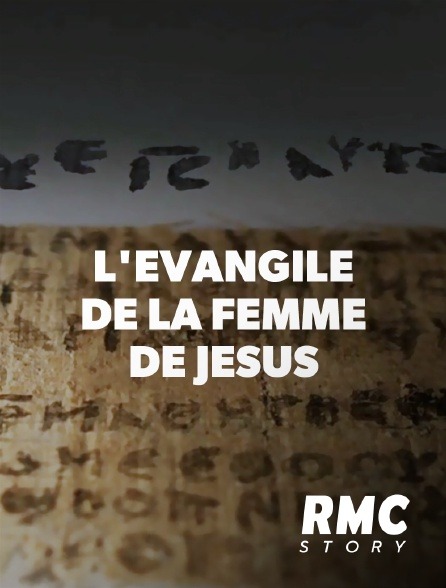
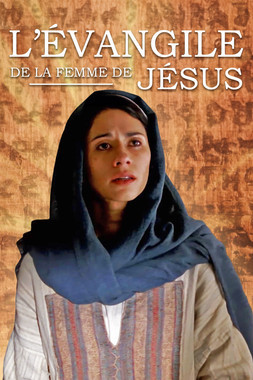
"L'Evangile de la Femme de Jésus" documentaire de Michael Langlois (2015) autour de la découverte d'un fragment d’évangile apocryphe par Karen King, Directrice de Recherche à Harvard (2012), août 2023.
0 notes
Link
0 notes
Link
0 notes
Text
Night Prey
Episode Recap #60: Night Prey Original Airdate: November 25, 1989
Starring: Louise Robey as Micki Foster Steve Monarque as Johnny Ventura (as Steven Monarque) Chris Wiggins as Jack Marshak
Guest cast: Michael Burgess as Kurt Bachman Eric Murphy as Evan Van Hellier Genevieve Langlois as Michele Vincent Dale as Tom Baker Jill Hennessy as Vampire Woman Donald Carrier as Finn (as Don Carrier) Dan MacDonald as Father McKinnon Tamara Gorski as Hooker Kirk Austensen as Young Preppie Matt Birman as Doorman Helen Sofos as Woman with Michele Wally Bolland as Security Guard (as Wally Bollard)
Written by Peter Mohan Directed by Armand Mastroianni
~~~~~~~~~~~~~
Open on Jack, sitting on a bench by the water, remembering about a time in 1969 and when someone he knew took a wrong path. We see a couple enjoying a romantic dinner back then, unaware another man is watching them from the shadows. Later, they stroll by the shore, and kiss, when suddenly, the man from earlier swoops down. He knocks the man out and bids the woman to come with him. She falls under some trance as the man reveals vampire fangs and bites her as her paramour awakens. He calls to Michele as she is lifted off as the vampire flies away.
Cut to credits.
Cut to the present, and a voiceover from Jack saying for 20 years the man, Kurt Bachman, learned the ways of the vampires and hunted them. Jack thinks this hunt twisted the man. But that this night, Kurt's path crossed with Jack's.
A woman is leading a man away from a club. The hunter Kurt follows them. The young man is reluctant, since she leads him to an alley, but he goes. They make out a bit, the hunter grows closer. She bites the man's lip, then kisses it. Suddenly, she bares her fangs and attacks the young man, killing him. As she rises up, Kurt appears with a crucifix, which she knocks aside with him. She goes in for the kill, but he has a wooden stake and she lands on it and dies. Kurt takes off.
As he runs, he hears a vampire above somewhere, screeching. Kurt breaks into a church to hide and finds a crucifix in a glass case. He breaks it open and a priest comes out to stop him. They struggle and Kurt accidentally kills the priest when a blade comes out of the bottom of this cross. It then glows in his hands. The vampire is levitating outside the window, watching. Another priest comes out, in shock at the body, and Kurt takes off. Outside, he can't find the vampire. He hides the cross in his coat.
Later at the church, Jack and Micki are told about the death of the priest, who was an old friend of Jack's. Micki asks about the stolen cross, and the young priest says it was valuable, called The Cross of Fire, and that it was from The Crusades. He mentions the blade inside, as well. He also describes the hunter to them.
Back at the store, Johnny has beer and pizza, but Jack is in no mood. Micki explains about the priest, then looks in the manifest to see if the Cross of Fire is one of their items.
Outside a club, Kurt watches as people arrive. He sees the vampire from year ago with a woman he thinks is Michele. He tries to follow them in to the club, but the guard stops him. The vampire, Evan Van Hellier, is the owner of the club. Kurt is turned away.
Micki and Johnny find the cross in the manifest.
Kurt tries another way in to the club, but the guard again stops him. Kurt pulls out the still glowing cross, and a beam of fire and light shoots out of it and kills the guard. Kurt runs when he hears other guards and Van Hellier come to investigate.
Johnny shows Micki an article about the murder at the club, the description matching the man who killed the priest. They also read about the woman killed in the alley and wonder if it is all connected. Jack tells them to visit the young Father Finn for more information and he is going to go talk to Van Hellier.
In an old factory warehouse, Kurt is also reading the article and holds the cross, repeating Evan Van Hellier's name.
Jack arrives at Van Hellier's mansion. An assistant, Tom Baker, answers the door and says Van Hellier is away. Jack asks about the murder at the club, and mentions that he thinks it is connected to the priest's murder. Jack mentions the stolen cross, but Baker has no more information. Jack leaves his card.
At Curious Goods, Micki fills them in on the Cross of Fire, which was first used outside of Transylvania, but seems to be used by superstitious people. Jack says Lewis' curse could have made it into a true vampire killing weapon. Jack tells them about being unable to see Van Hellier. They speculate that the man using the Cross may be using it to hunt actual vampires. He sends Micki and Johnny to stake out the club.
Kurt shows up at the mansion asking to see Van Hellier. The security guard is reluctant, but Kurt shows him the Cross and says his boss might be interested in it. Kurt then releases the blade and kills the guard, powering up the cursed item. He runs toward the mansion.
Breaking in a door, he slips inside, looking for Van Hellier. The place is dark, but then Van Hellier slams the piano. Kurt accuses the vampire of killing his wife. Van Hellier asks who he is, then bares his fangs and tosses Kurt to the floor. Kurt pulls out the glowing Cross and the vampire flees.
Kurt makes his way upstairs and finds two vampire women in bed. He uses the cross to kill one of them, and finds that the other vampire is his wife, Michele.
Kurt brings her back to the factory, where he chains her up. He has a shrine for her with old photos and candles. He tells her not to be afraid. He says she'll be safe once he kills Van Hellier, but she says to stay away, she isn't the person he remembers. She just wants to be let go, but Kurt wants vengeance.
Jack is surprised when Micki is home, but she says the club closed at 3am and everyone went home. Jack says the clubgoers might have been vampires. Micki wonders why her and Johnny weren't attacked. He tells Micki to go to bed, he has to write the eulogy for the priest's funeral tomorrow. Micki is worried about Jack. He feels like even with all they do, there is still so much death.
Van Hellier and Baker arrive at the factory, since the vampire can sense Michele is inside. The go to find her. Michele can also feel his presence, and Kurt grabs the cross to find them first. Kurt and Baker, the assistant, struggle, as Van Hellier tries to get past all the garlic and protections keeping him from Michele. Van Hellier cuts his arm so Michele can feed on his blood.
Kurt stabs Baker, but he he pushes Kurt off and runs. A weakened Van Hellier also flees. Outside, then sun hurts Van Hellier, so Baker pushes him into the car and they speed off. Baker mentions Jack having visited the mansion and maybe they can get answers from him.
Kurt goes to Michele, who tells him that holding her there is killing her, but Kurt only sees the woman he used to love and cannot free her. She then asks him to feed her.
Jack and Micki are back home after the funeral, having a drink in his friend's memory. As Jack goes to change, Micki notices a man at the door, who introduces himself as Evan Van Hellier. Micki invites him inside. He says he has information that could help Jack. Van Hellier slightly works his charms on Micki, but Jack comes back. Van Hellier says he owns the old warehouse, and rented it to Kurt Bachman, who showed him the Cross he had. As Van Hellier talks, Jack notices a mirror and Van Hellier has no reflection. Van Hellier gives them the warehouse address, and Jack plays it cool. After the vampire leaves, Jack gets some holy water. He tells Micki they are going to pick up Johnny and head to the warehouse.
Kurt walks a street and approaches a prostitute. He takes her back to the warehouse, where the woman is surprised to see Michele. But Kurt reminds her he paid already, so she goes to Michele, who acts gentle and then lightly bites. The woman gasps, but Kurt holds her and tells her not to be afraid. Michele then feeds on her, killing her, as Kurt watches. They hold hands.
Micki, Johnny and Jack arrive at the warehouse, and Kurt goes to investigate. Michele tries to stop him, and says Van Hellier never hurt her, he loves her. Kurt asks if she loves him and she doesn't answer. He takes off.
Kurt finds Micki and tries to kill her with cross, but Johnny intervenes. Micki gets the cross, Kurt runs off. Jack tells the others they need to get out of there.
A frustrated Kurt goes back to Michele. She tells him to go while he can, but he won't go without her.
Outside, Van Hellier and Baker watch Micki and crew leave the factory with the Cross. They go to enter the factory to find Michele.
Kurt wants Michele to turn him into a vampire, but she is reluctant. Kurt kisses her as he pleads. She bites him.
Micki wants to go back in to stop Kurt and whatever is going on, but Jack doesn't want to endanger their lives since they have recovered the Cross. He knows Van Hellier tricked them. Micki says without the Cross, Kurt is a sitting duck. Jack says they can't save the whole world. He gets in the car, but Micki runs back inside, followed by Johnny.
Van Hellier and Baker look around inside for Kurt and Michele. Kurt kills Baker, and Van Hellier is shocked to see that Michele turned Kurt into a vampire. She says Van Hellier lied to her, having told her Kurt was dead. Kurt flies up to fight his foe, and Van Hellier gets tangled in a chain and falls, hanging upside down. Kurt jumps down. Van Hellier frees himself and the two struggle on.
Micki and Johnny hear the commotion and go to investigate.
Just as Van Hellier is about to kill Kurt, Michele begs him not to, for her. He drops his weapon, but Kurt grabs a piece of wood and stabs him. Michele watches Van Hellier die. Kurt then goes to attack Micki when she arrives, but Jack shows up and tosses holy water on him. Kurt falls, then bursts into flames as Michele screams. She hisses and bares her fangs. Jack tells Micki and Johnny to go and raises the holy water, but Michele stops. Jack leaves with the others as Michele screams.
At the store, Johnny and Micki wait on Jack, who hasn't come home yet. Johnny is surprised Jack let Michele survive. Johnny says he'll wait for Jack to come back, but they can't understand why he let Michele live.
Cut back to Jack as he was at the beginning, on the bench by the water, contemplating all that happened. He wishes he could have the wisdom the vampires have, almost envious of how much they learn over centuries of life.
~~~~~~~~~~~~~
My thoughts:
First up, the night scenes are sometimes so dark here, it is hard to see what is actually happening. I know it might be a combo of the time and not great resolution, but sheesh.
The set up here was odd, too, with Jack so melancholy by the water. I get it, once we see the frustration he's feeling about all the death that surrounds him, but at first it made me think Kurt was an old friend of his, as well. And in the flashback to 1969, I was unsure if the man was just a younger version of Jack. Wasn't made very clear who was who.
Glad they showed that Jack isn't always the rock that isn't bothered by the curse and all the deaths. It would get to anyone, so it's glad to see this side, even if it is brief.
Also liked Micki being understanding up until Jack wanted to just take the cross and go. She ran back in their with no weapons and at least two vampires waiting! Brave of her. Dumb, but brave.
Kind of funny how this vampire and his club have been there awhile and it is only now that Jack and crew are clued in to it. Also, if Jack was such good friends with the priest, why did the man never mention that Cross to him? Or Jack even just notice it when visiting? Nitpick, I know.
Wonder what became of vampire Michele? Guess we will never know.
Next week: Femme Fatale
#episode recap#season three#cross of fire#cross#crucifix#vampire#vampires#jack marshak#chris wiggins#micki foster#robey#louise robey#johnny ventura#steven monarque
1 note
·
View note
Text
The Mesha Stele, a three-foot-tall black basalt monument dating to nearly 3,000 years ago, bears a 34-line inscription in Moabite, a language closely related to ancient Hebrew—the longest such engraving ever found in the area of modern-day Israel and Jordan. In 1868, an amateur archaeologist named Charles Clermont-Ganneau was serving as a translator for the French Consulate in Jerusalem when he heard about this mysterious inscribed monument lying exposed in the sands of Dhiban, east of the Jordan River. No one had yet deciphered its inscription, and Clermont-Ganneau dispatched three Arab emissaries to the site with special instructions. They laid wet paper over the stone and tapped it gently into the engraved letters, which created a mirror-image impression of the markings on the paper, what’s known as a “squeeze” copy.
But Clermont-Ganneau had misread the delicate political balance among rival Bedouin clans, sending members of one tribe into the territory of another—and with designs on a valuable relic no less. The Bedouin grew wary of their visitors’ intentions. Angry words turned threatening. Fearing for his life, the party’s leader made a break for it and was stabbed in the leg with a spear. Another man leaped into the hole where the stone lay and yanked up the wet paper copy, accidentally tearing it to pieces. He shoved the torn fragments into his robe and took off on his horse, finally delivering the shredded squeeze to Clermont-Ganneau.
Afterward, the amateur archaeologist, who would become an eminent scholar and a member of the Institut de France, tried to negotiate with the Bedouin to acquire the stone, but his interest, coupled with offers from other international bidders, further irked the tribesmen; they built a bonfire around the stone and repeatedly doused it with cold water until it broke apart. Then they scattered the pieces. Clermont-Ganneau, relying on the tattered squeeze, did his best to transcribe and translate the stele’s inscription. The result had profound implications for our understanding of biblical history.
The stone, Clermont-Ganneau found, held a victory inscription written in the name of King Mesha of Moab, who ruled in the ninth century B.C. in what is now Jordan. The text describes his blood-soaked victory against the neighboring kingdom of Israel, and the story it told turned out to match parts of the Hebrew Bible, in particular events described in the Book of Kings. It was the first contemporaneous account of a biblical story ever discovered outside the Bible itself—evidence that at least some of the Bible’s stories had actually taken place.
In time, Clermont-Ganneau collected 57 shards from the stele and, returning to France, made plaster casts of each—including the one Langlois now held in his hand—rearranging them like puzzle pieces as he worked out where each of the fragments fit. Then, satisfied he’d solved the puzzle, he “rebuilt” the stele with the original pieces he’d collected and a black filler that he inscribed with his transcription. But large sections of the original monument were still missing or in extremely poor condition. Thus certain mysteries about the text persist to this day—and scholars have been trying to produce an authoritative transcription ever since.
The end of line 31 has proved particularly thorny. Paleographers have proposed various readings for this badly damaged verse. Part of the original inscription remains, and part is Clermont-Ganneau’s reconstruction. What’s visible is the letter bet, then a gap about two letters long, where the stone was destroyed, followed by two more letters, a vav and then, less clearly, a dalet.
In 1992, André Lemaire, Langlois’ mentor at the Sorbonne, suggested that the verse mentioned “Beit David,” the House of David—an apparent reference to the Bible’s most famous monarch. If the reading was correct, the Mesha Stele did not just offer corroborating evidence for events described in the Book of Kings; it also provided perhaps the most compelling evidence yet for King David as a historical figure, whose existence would have been recorded by none other than Israel’s Moabite enemies. The following year, a stele uncovered in Israel also seemed to mention the House of David, lending Lemaire’s theory further credence.
Over the next decade, some scholars adopted Lemaire’s reconstruction, but not everyone was convinced. A few years ago, Langlois, along with a group of American biblical scholars and Lemaire, visited the Louvre, where the reconstructed stele has been on display for more than a century. They took dozens of high-resolution digital photographs of the monument while shining light on certain sections from a wide variety of angles, a technique known as Reflectance Transformation Imaging, or RTI. The Americans were working on a project about the development of the Hebrew alphabet; Langlois thought the images might allow him to weigh in on the King David controversy. But watching the photographs on a computer screen in the moments they were taken, Langlois didn’t see anything of note. “I was not very hopeful, frankly—especially regarding the Beit David line. It was so sad. I thought, ‘The stone is definitively broken, and the inscription is gone.’”
It took several weeks to process the digital images. When they arrived, Langlois began playing with the light settings on his computer, then layered the images on top of each other using a texture-mapping software to create a single, interactive, 3D image—probably the most accurate rendering of the Mesha Stele ever made.
And when he turned his attention to line 31, something tiny jumped off the screen: a small dot. “I’d been looking at this specific part of the stone for days, the image was imprinted in my eyes,” he told me. “If you have this mental image, and then something new shows up that wasn’t there before, there’s some kind of shock—it’s like you don’t believe what you see.”
In some ancient Semitic inscriptions, including elsewhere on the Mesha Stele, a small engraved dot signified the end of a word. “So now these missing letters have to end with vav and dalet,” he told me, naming the last two letters of the Hebrew spelling of “David.”
Langlois reread the scholarly literature to see if anyone had written about the dot—but, he said, no one had. Then, using the pencil on his iPad Pro to imitate the monument’s script, he tested every reconstruction previously proposed for line 31. Taking into account the meaning of the sentences that come before and after this line, as well as traces of other letters visible on RTI renderings the group had made of Clermont-Ganneau’s squeeze copy, Langlois concluded that his teacher was right: The damaged line of the Mesha Stele did, almost certainly, refer to King David. “I really tried hard to come up with another reading,” Langlois told me. “But all of the other readings don’t make any sense.”
In the sometimes contentious world of biblical archaeology, the finding was hailed by some scholars and rejected by others. Short of locating the missing pieces of the stele miraculously intact, there may be no way to definitively prove the reading one way or another. For many people, though, Langlois’ evidence was as close as we might get to resolving the debate. But that hasn’t stopped him from inviting competing interpretations. Last year, Matthieu Richelle, an epigrapher who also studied under Lemaire, wrote a paper arguing, among other things, that Langlois’ dot could just be an anomaly in the stone. He presented his findings at a biblical studies conference in a session organized by Langlois himself. “This says something about how open-minded he is,” Richelle told me.
— How an Unorthodox Scholar Uses Technology to Expose Biblical Forgeries
#chanan tigay#michael langlois#how an unorthodox scholar uses technology to expose biblical forgeries#history#religion#christianity#judaism#languages#linguistics#translation#palaeography#museums#archaeology#technology#digital technology#bible#torah#israel#jordan#bedouin#moab#biblical hebrew#moabite language#mesha stele#charles simon clermont-ganneau#king mesha#andré lemaire#king david#matthieu richelle
4 notes
·
View notes
Link
Oooh, so this was the guy who helped expose the Dead Sea Scrolls as a forgery!
1 note
·
View note
Text
On June 20, 2013, Class of 1984 was released on DVD in Italy.



#class of 1984#mark l. lester#tom holland#michael j. fox#lisa langlois#roddy mcdowall#dystopian movies#dystopian films#action film#exploitation cinema#exploitatoin film#the last drive in with joe bob briggs#the last drive in#tcm underground#movie art#art#drawing#movie history#pop art#modern art#pop surrealism#cult movies#portrait#cult film#italy#dvd#home media
1 note
·
View note
Link
The Dead Sea Scrolls, first uncovered by a trio of Bedouin wandering the Judean Desert in 1947, provide a fascinating glimpse into what Scripture looked like during a transformative period of religious ferment in ancient Israel. The scrolls include the oldest copies ever found of the Hebrew Bible, “apocryphal” texts that were never canonized, and rules and guidelines for daily living written by the community of people who lived at Qumran, where the first scrolls were found. All told, scholars have identified as many as 100,000 Dead Sea Scrolls fragments, which come from more than 1,000 original manuscripts.
Experts date the scrolls between the third century B.C. and the first century A.D. (though Langlois believes several may be two centuries older). Some of them are relatively large: One copy of the Book of Isaiah, for example, is 24 feet long and contains a near-complete version of this prophetic text. Most, however, are much smaller—inscribed with a few lines, a few words, a few letters. Taken together, this amounts to hundreds of jigsaw puzzles whose thousands of pieces have been scattered over many different locations around the world.
In 2012, Langlois joined a group of scholars working to decipher close to 40 Dead Sea Scrolls fragments in the private collection of Martin Schøyen, a wealthy Norwegian businessman. Each day in Kristiansand, Norway, he and specialists from Israel, Norway and the Netherlands spent hours trying to determine which known manuscripts the fragments had come from. “It was like a game for me,” Langlois said. The scholars would project an image of a Schøyen fragment on the wall beside a photograph of a known scroll and compare them. “I’d say, ‘No, it’s a different scribe. Look at that lamed,’” Langlois recalled, using the word for the Hebrew letter L. Then they would skip forward to another known manuscript. “No,” Langlois would say. “It’s a different hand.”
Each morning, while out walking, the scholars discussed their work. And each day, according to Esti Eshel, an Israeli epigrapher also on the team, “They were killing another identification.” Returning to France, Langlois examined the fragments with computer-imaging techniques he had developed to isolate and reproduce each letter written on the fragments before beginning a detailed graphical analysis of the writing. And what he discovered was a series of flagrant oddities: A single sentence might contain styles of script from different centuries, or words and letters were squeezed and distorted to fit into the available space, suggesting the parchment was already fragmented when the scribe wrote on it. Langlois concluded that at least some of Schøyen’s fragments were modern forgeries. Reluctant to break the bad news, he waited a year before telling his colleagues. “We became convinced that Michael Langlois was right,” said Torleif Elgvin, the Norwegian scholar leading the effort.
After further study, the team ultimately determined that about half of Schøyen’s fragments were likely forgeries. In 2017, Langlois and the other Schøyen scholars published their initial findings in a journal called Dead Sea Discoveries. A few days later, they presented their conclusions at a meeting in Berlin of the Society of Biblical Literature. Flashing images of the Schøyen fragments on a screen, Langlois described the process by which he concluded the pieces were fakes. He quoted from his contemporaneous notes on the scribe’s “hesitant hand.” He pointed out inconsistencies in the fragments’ script.
And then he dropped the gauntlet: The Schøyen fragments were only the beginning. The previous year, he said, he’d seen photos of several Dead Sea Scrolls fragments in a book published by the Museum of the Bible, in Washington, D.C., a privately funded complex a few blocks from the U.S. Capitol. The museum was scheduled to open its doors in three months, and a centerpiece of its collection was a set of 16 Dead Sea Scrolls fragments whose writing, Langlois now said, looked unmistakably like the writing on the Schøyen fragments. “All of the fragments published there exhibited the same scribal features,” he told the scholars in attendance. “I’m sorry to say that all of the fragments published in this volume are forgeries. This is my opinion.”
The weight of the evidence presented that day by several members of the Schøyen team led to a re-evaluation of Dead Sea Scrolls in private collections all over the world. In 2018, Azusa Pacific University, a Christian college in Southern California that had purchased five scrolls in 2009, conceded that they were likely fakes, and it sued the dealer who had sold them. In 2020, the Southwestern Baptist Theological Seminary, in Fort Worth, Texas, announced that the six Dead Sea Scrolls it had purchased around the same time were also “likely fraudulent.”
The most stunning admission came from executives at the Museum of the Bible: They had hired an art-fraud investigator to examine the museum’s fragments using advanced imaging techniques and chemical and molecular analysis. In 2020, the museum announced that its prized collection of Dead Sea Scrolls was made up entirely of forgeries.
Langlois told me that he derives no pleasure from such discoveries. “My intention wasn’t to be an expert in forgeries, and I don’t love catching bad guys or something,” he told me. “But with forgeries, if you don’t pay attention, and you think they are authentic, then they become part of the data set you use to reconstruct the history of the Bible. The entire theory is then based on data that is false.” That’s why ferreting out biblical fakes is “paramount,” Langlois said. “Otherwise, everything we are going to do on the history of the Bible is corrupt.”
#history#languages#linguistics#religion#christianity#judaism#forgery#biblical hebrew#bible#dead sea scrolls#michael langlois
72 notes
·
View notes
Text





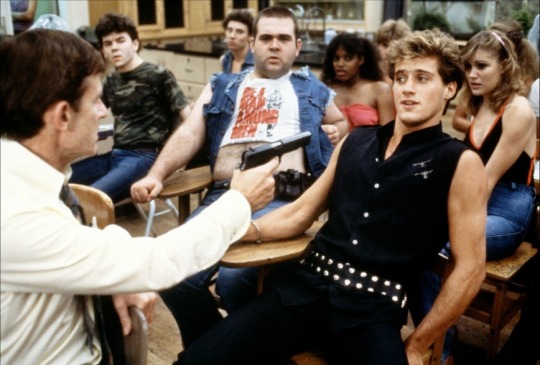




Class of 1984 (1982)
"You shouldn't be in here, Andrew!"
"What're you doing?"
"I'm teaching. Can't you see that?"
#Class of 1984#canadian cinema#1982#exploitation film#mark l. lester#Tom Holland#perry king#Merrie Lynn Ross#Timothy Van Patten#roddy mcdowall#Stefan Arngrim#michael j. fox#Keith Knight#Lisa Langlois#Neil Clifford#Al Waxman#Erin Noble#David Gardner#Steve Pernie#Robert Reece#Belongs to that very 80s genre of teens out of control thrillers; the spiritual successors to similar hysteria baiting hand wringing films#From 20 or 30 yrs earlier (think Blackboard Jungle or James Dean) only even more firmly on the side of the middle age middle class middle#Everything everyman. A conservative wet dream in which adults can avenge themselves on teenagers and still be the hero. And yet.... It's#Enormously fun. Sorry not sorry but exploitation films are always exploiting someone (Inc. The audience half the time) and so they're#Always gonna be problematic. This agitprop for the angry boomer but it's also a hell of a ride. And really well made! I mean Roddy McDowall#Is in this. And he's brilliant! He has one incredible scene where he teaches a class at gunpoint (ie. He's holding the gun). It's a real#High point. So yeah. Life is full of dualities yknow. This film is sort of horrible but it's also so much fun. And it really accelerates in#The last act out of nowhere. Totally absurd. Oh and baby Michael J Fox! He's one of the good kids of course. Wouldn't catch Marty McFly#Selling dope and getting into knife fights
57 notes
·
View notes